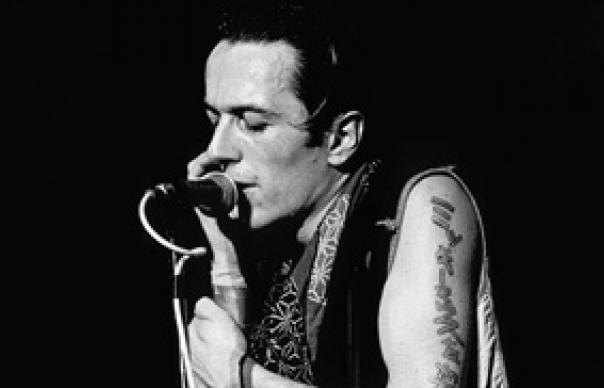It’s rare that rock star deaths have such a profound, and widespread, impact as Joe Strummer’s passing did. In the opening sequence to Temple’s documentary, radio and TV bulletins beam news of his death, on December 22, 2002, round the globe. Using excerpts from Strummer’s London Calling World Music show, home movies, archive footage and original interviews, Temple explores Strummer’s trajectory, from private schoolboy via punk icon to a passionate environmentalist whose death became a global event. As with Temple’s Sex Pistols doc, The Filth And The Fury, the collage of different media brings the story to life. For the rebellious schoolboy, Joe’s voiceover is accompanied by clips from If…, 1984 and Animal Farm. To capture his hobo period, Joe’s letters to old girlfriends, illustrated with comic sketches, are animated. Cut through the film are campfire reminiscences by family, friends and admirers including Jim Jarmusch, assorted Chili Peppers, Bobby Gillespie and Clash partners Jones, Headon and Chimes (but not, strangely, Paul Simonon). Inevitably, The Clash – captured in seminal archive footage – are key to the Strummer’s story. There’s a sense that the first half of his life was spent building up to the group’s success, often cutting off friends to fulfil his ambition; he then spent the rest of his life recovering from it. The depression that haunted him is evident as he struggled with the contradictions of fame, exhausted and demoralised by The Clash’s final US stadium show in 1983. Far from a hagiography, Future… acknowledges the complexities and contradictions of Joe’s character, doesn’t flinch from exposing his many flaws. A predictably grandstanding Bono strikes a false note, though. The U2 man took The Clash’s passion into another sphere, and was slated to collaborate with Strummer the month after he died, but the tone of his appearance here is sorely misjudged. Whether Bono honoured the rebel rock outsider principle that made Strummer a rallying point is debatable. The film itself, though, gives Joe’s legacy everything it deserves. Only Temple could have gained access to this material, and commanded it so successfully. Early on, we see footage of Strummer nailing the opening to “White Riot”; and until the close, this film brilliantly evokes the spirit of punk’s greatest ambassador. GAVIN MARTIN
It’s rare that rock star deaths have such a profound, and widespread, impact as Joe Strummer’s passing did. In the opening sequence to Temple’s documentary, radio and TV bulletins beam news of his death, on December 22, 2002, round the globe. Using excerpts from Strummer’s London Calling World Music show, home movies, archive footage and original interviews, Temple explores Strummer’s trajectory, from private schoolboy via punk icon to a passionate environmentalist whose death became a global event.
As with Temple’s Sex Pistols doc, The Filth And The Fury, the collage of different media brings the story to life. For the rebellious schoolboy, Joe’s voiceover is accompanied by clips from If…, 1984 and Animal Farm. To capture his hobo period, Joe’s letters to old girlfriends, illustrated with comic sketches, are animated. Cut through the film are campfire reminiscences by family, friends and admirers including Jim Jarmusch, assorted Chili Peppers, Bobby Gillespie and Clash partners Jones, Headon and Chimes (but not, strangely, Paul Simonon).
Inevitably, The Clash – captured in seminal archive footage – are key to the Strummer’s story. There’s a sense that the first half of his life was spent building up to the group’s success, often cutting off friends to fulfil his ambition; he then spent the rest of his life recovering from it. The depression that haunted him is evident as he struggled with the contradictions of fame, exhausted and demoralised by The Clash’s final US stadium show in 1983.
Far from a hagiography, Future… acknowledges the complexities and contradictions of Joe’s character, doesn’t flinch from exposing his many flaws. A predictably grandstanding Bono strikes a false note, though. The U2 man took The Clash’s passion into another sphere, and was slated to collaborate with Strummer the month after he died, but the tone of his appearance here is sorely misjudged.
Whether Bono honoured the rebel rock outsider principle that made Strummer a rallying point is debatable. The film itself, though, gives Joe’s legacy everything it deserves. Only Temple could have gained access to this material, and commanded it so successfully. Early on, we see footage of Strummer nailing the opening to “White Riot”; and until the close, this film brilliantly evokes the spirit of punk’s greatest ambassador.
GAVIN MARTIN



